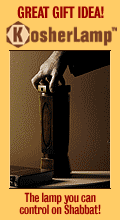By: Jonathan Z. Kremer
|
Incandescent |
| Life span: |
700-1000 hours |
| Pros: |
cheap; gives a pleasant warm light that most
people like, |
| Cons: |
least efficient of all the bulbs |
| Efficiency: |
7 - 24 lumens per watt |
| Uses: |
General lighting |
| Notes: |
can heat up, therefore care must be taken
near flammable material, short life span. |
| |
(TOP) |
|
Halogen |
| Life span: |
2,000 - 4,000 hours |
| Pros: |
more efficient than incandescent bulbs;
bright light |
| Cons: |
burns very hot; more expensive than
incandescent |
| Efficiency: |
12 - 36 lumens per watt |
| Uses: |
220v tubes - General lighting,
floodlights
12V - accent lighting, task
lighting |
| Notes: |
must be careful using these bulbs near
flammable materials or in closed places. |
| |
(TOP) |
|
Fluorescent (tubular) |
| Life span: |
10,000 - 20,000 hours |
| Pros: |
bulb burns cooler; very efficient; can come
in various CRI ratings; comes in different color
temperatures |
| Cons: |
not dimmable; fixtures are more costly;
known to flicker at times. |
| Efficiency: |
33 - 100 lumens per watt |
| Uses: |
General, floodlights |
| Notes: |
frequent switching on and off reduces
efficiency. |
| |
(TOP) |
|
Compact Fluorescent |
| Life span: |
Up to 10,000 hours |
|
| Pros: |
efficient |
|
| Cons: |
cost of bulb; sometimes they can't physically fit; to
replace incandescent bulbs |
|
| Efficiency: |
44 - 80 lumens per watt |
|
| Uses: |
General lighting |
|
| Notes: |
frequent switching on and off reduces efficiency. |
|
| |
(TOP) |
|
|
Metal Halide |
| Life span: |
6,000 - 10,000 hours |
|
| Pros: |
extremely efficient; give a brilliant light; bulbs come
in different color temperatures; good color rendering. |
|
| Cons: |
cost of both fixture and bulb; burns hot |
|
| Efficiency: |
60 - 125 lumens per watt |
|
| Uses: |
places where a lot of light is needed such as outdoor
areas and retail shops. Used frequently in sports arenas, stadiums,
auditoriums, and convention halls |
|
| Notes: |
not to be used near flammable materials. Bulbs usually
must burn in a certain position. |
|
| |
(TOP) |
|
|
LED
(SSL) |
| Life span: |
30,000 - 80,000 hours (100,000 hours) |
|
| Pros: |
High durability - no filament or tube to break; long
life span; low power consumption; low heat generation |
|
| Cons: |
High cost of bulb (in the meantime) |
|
| Efficiency: |
30 - 60 lumens per watt (200 lumens per watt) |
|
| Uses: |
wide variety of uses including general lighting, accent
lighting, and decorative lighting |
|
| Notes: |
LED technology is relatively new, and is changing every
day. The quality and efficiency of the bulbs are improving all the time.
The ratings in parentheses (above) are the predicted improvements which
are expected to come about within the next few years. |
|
| |
(TOP) |
|
|
Mercury Vapor |
| Life span: |
1600 - 6000 hours |
|
| Pros: |
more efficient than incandescent and halogen; gives a
nice color to landscapes. |
|
| Cons: |
lowest efficiency of the HID type bulbs; dims rapidly;
bad color rendering |
|
| Efficiency: |
20 - 63 lumens per watt |
|
| Uses: |
landscape illumination, outdoor lighting |
|
| Notes: |
produce a blue-green light |
|
| |
(TOP) |
|
|
High Pressure Sodium |
| Life span: |
18,000 - 24,000 hours |
|
| Pros: |
extremely efficient, long lasting, |
|
| Cons: |
bad color rendering, produces yellowish light; slowly
lose their brightness with time |
|
| Efficiency: |
60 - 140 lumens per watt |
|
| Uses: |
very popular for indoor horticulture, outdoor and
industrial applications |
|
| Notes: |
Please see note
at bottom. |
|
| |
(TOP) |
|
|
Low Pressure Sodium |
| Life span: |
approximately 16,000 hours |
|
| Pros: |
one of the most efficient bulbs there is, long life
span. |
|
| Cons: |
worst color rendering (monochromatic) of all the bulbs,
initial setup can be costly |
|
| Efficiency: |
90 - 180 lumens per watt |
|
| Uses: |
security lighting or indoor applications like stairwells |
|
|
Notes: |
monochromatic - all colors under this light appear black, white, or
shades of gray.
Please see note at
bottom. |
|
|
|
(TOP) |
|
Please Note:
If sodium lamps break, ventilate the area where breakage occurred. Clean-up
with vacuum cleaner or other suitable means that avoids dust generation. Take
usual precautions for collection of broken glass. Clean-up requires special care
due to the fact that sodium reacts with the moisture on the skin and in the air.
Materials from broken lamps should be treated as for spent lamps. To avoid the
risk of sodium reaction when disposing of spent lamps, the following procedure
should be followed:
· Before commencing, operator should be outfitted with appropriate face mask,
gloves and apron.
· Place lamp(s) in a dry, high container and break lamp(s) into small pieces in
a dry atmosphere and in a well ventilated
area.
· From a safe distance, pour enough tap water into container to cover all
materials.
· After a few minutes, the reaction of the sodium with the large quantity of
water will produce a mild sodium hydroxide
solution which may be disposed of in accordance with applicable local
regulations.



